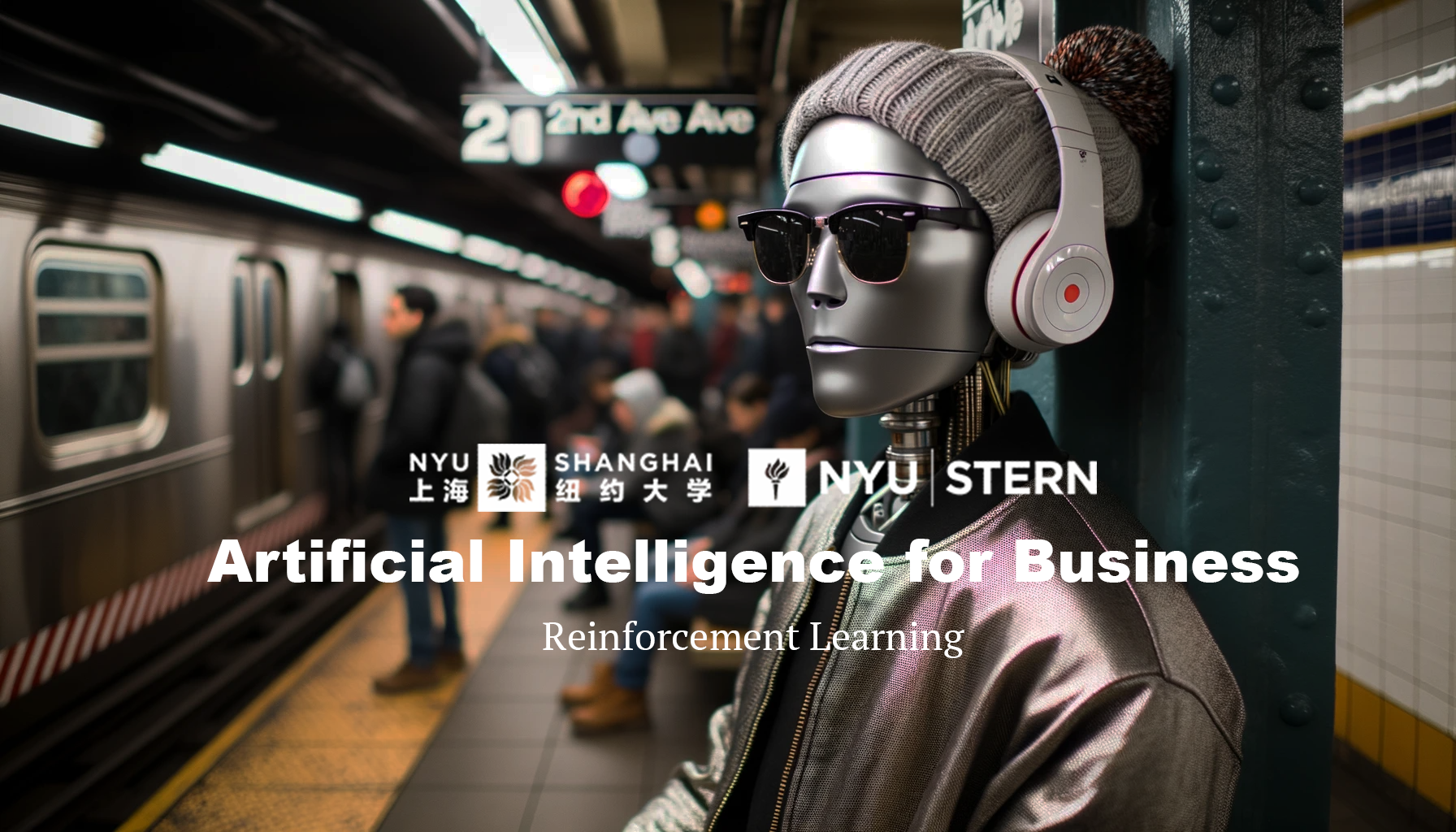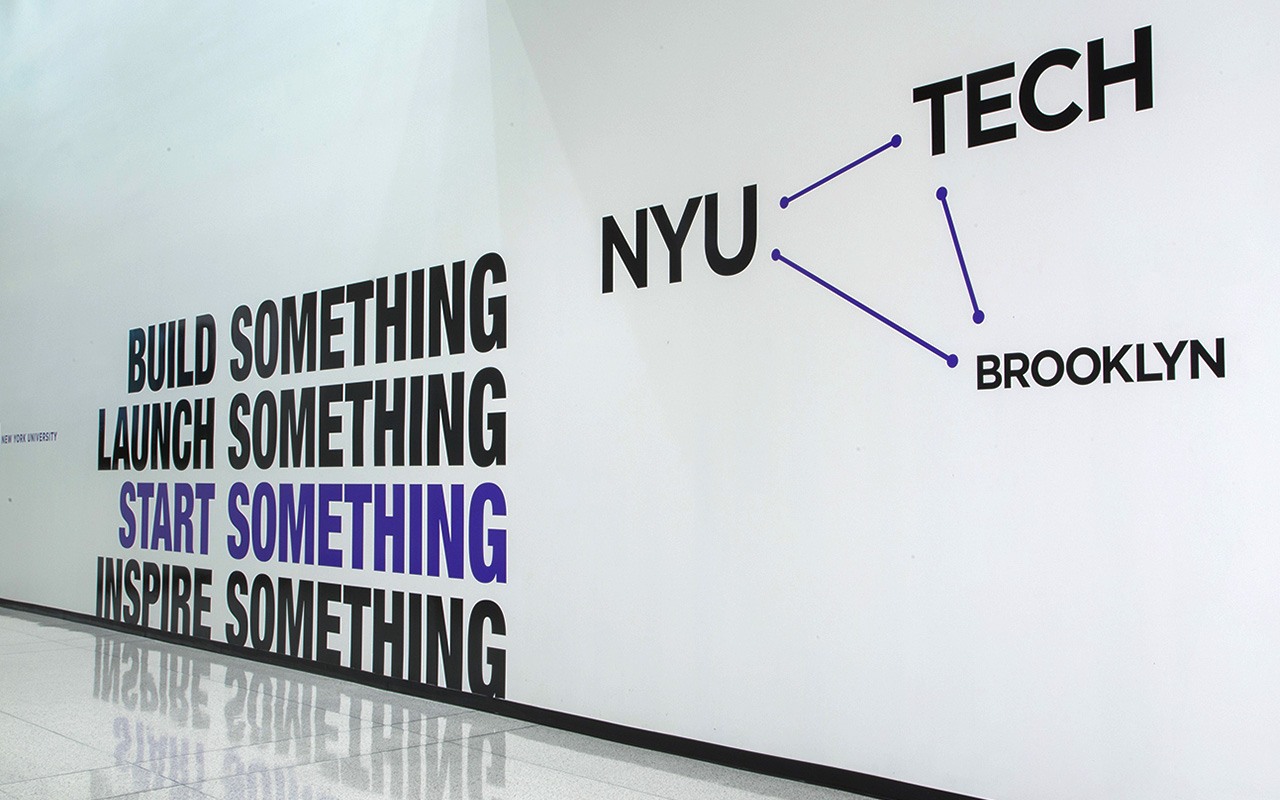Published June 10, 2024
At NYU, AI for Business, Science, and … Song?

While AI can feel like a buzzword these days, NYU has a long history with artificial intelligence technology—and more than a dozen diverse courses explore its applications and roles in our world. Today, the question isn’t whether AI will impact our systems and society. Rather, it is how we can productively and responsibly make the most of it.
Here, we explore how two NYU courses tackle AI through very different lenses.

Get Down to Business with Reinforcement Learning
When it comes to business, AI is rewriting the playbook. And in Bruno Abrahao’s Artificial Intelligence for Business: Reinforcement Learning course, NYU Shanghai students navigate the complexities of reinforcement learning (RL) as a framework for overcoming business challenges. Students learn to build an AI agent that can make decisions based on rewards and penalties. As a result, they prepare to use RL for marketing, stock trading, and even self-driving cars.
“I wanted to take an introductory course on both the theoretical and business sides of artificial intelligence,” explains Mohamed Hendy. He’s a Computer Science major who took the course. “Also, I wanted to gain more insights into the AI world given the current hype.”
“RL ranks among the most sought-after skills in the tech industry,” affirms Abrahao. He’s an assistant professor of information systems and business analytics at NYU Shanghai. “So, what inspired me to create this course was wanting to demystify these complex principles. I wanted to make them accessible to undergraduate students from diverse backgrounds.” Yuqin (Bailey) Bai, an undergraduate teaching fellow for the course, adds, “I appreciated how effectively Professor Abrahao broke down the concepts. He used very accessible examples, such as the application of RL in navigating the game Pac-Man.”
The course is a collaboration between NYU Shanghai and the NYU Stern School of Business, allowing students to take advantage of both schools’ resources and expertise. “As a business course, it’s more intuitive than purely theoretical,” shares Bailey. “Plus, it’s more connected to reality. We talked a lot about how to apply these algorithms in practical ways.” Ultimately, concludes Abrahao, “My goal is for students to emerge as skilled practitioners and innovative thinkers. Then, they can leverage RL to drive progress and efficiency in whatever fields they choose to pursue.”

Find Your Rhythm Across the Cosmos
When you think of AI, do you think about robots? Maybe it conjures images of societal collapse—or perhaps global revolution. But chances are you probably don’t think about hip-hop. “‘Hip-Hop, the Cosmos, and Artificial Intelligence.’ I had never seen a course name with such seemingly incompatible words,” recalls Louis Kwak, who took the course. He’s double-majoring in Computer Science and Psychology at NYU Abu Dhabi. “I thought, ‘How can hip-hop, cosmology, and artificial intelligence possibly come together within a class?’ So, I put the course as my top choice for January Term. Gladly and luckily, I got in.”
In the two-week course, Professors Robert Rowe and Stephon Alexander teach students to link AI and physics to create original hip-hop pieces. “The course is based on how scientific discovery and artistic creation are the same process in many respects,” Rowe, professor of music technology at the NYU Steinhardt School of Culture, Education, and Human Development, explains. “We wanted students to create something that they considered their own and not something that was made for them. To me, that seems the most powerful application of AI.” There are no prerequisites for the course, so students come from a diverse range of backgrounds. “But all of them had a pretty intense interest in hip-hop,” adds Rowe.
Throughout the term, students train models and get out of the classroom for practical learning opportunities. For example, the class attended a performance of Carnatic music in Dubai. Then, they used the focus on rhythm to inform their original pieces. “As an aspiring interdisciplinary researcher, the course gave me confidence that the intersections among my fields of study—computational neuroscience, human-computer interaction, and so on—were more than worthwhile,” Louis shares. “It’s a lot to cover. However, after discovering the incredible links among these seemingly mutually exclusive fields, I was exhilarated and astonished by the interdisciplinary beauty of hip-hop, the cosmos, and AI.”



